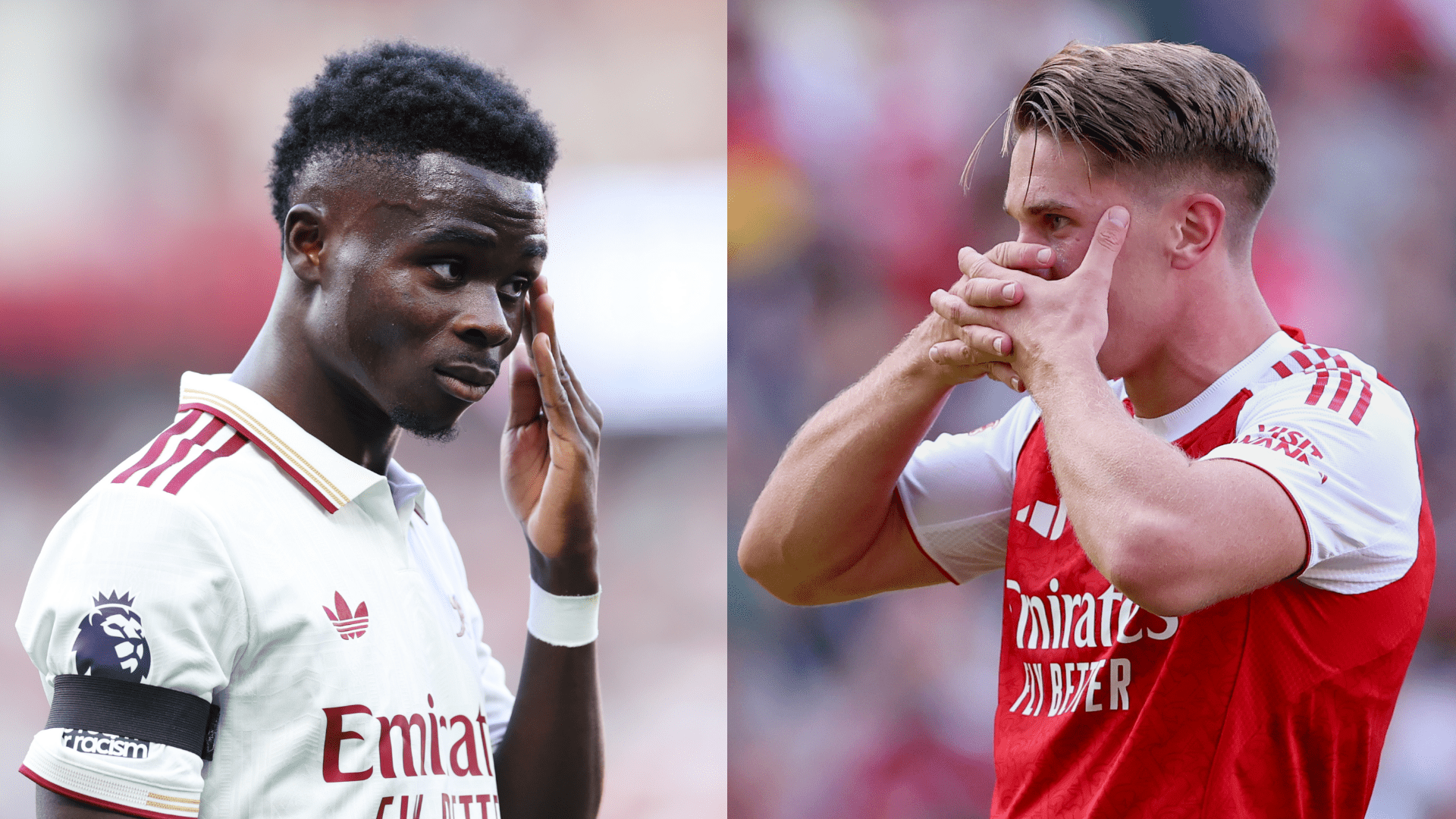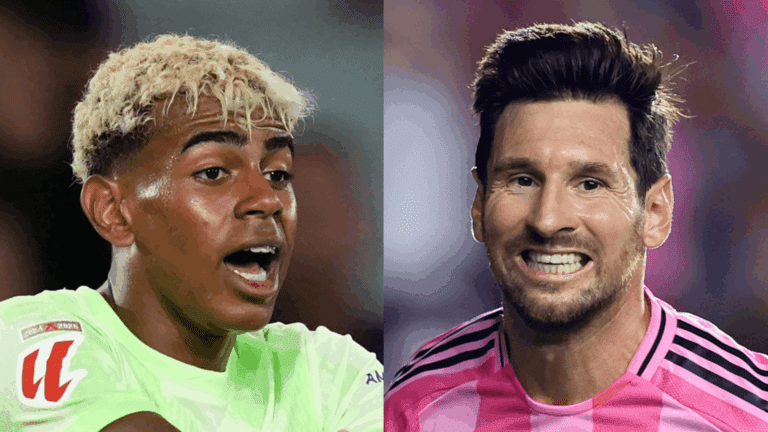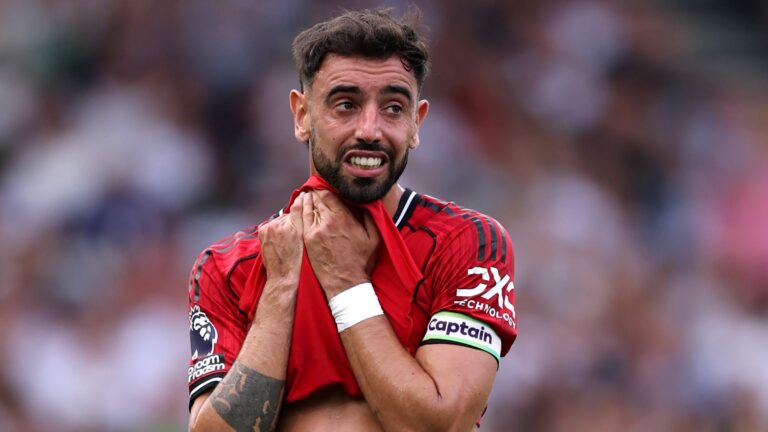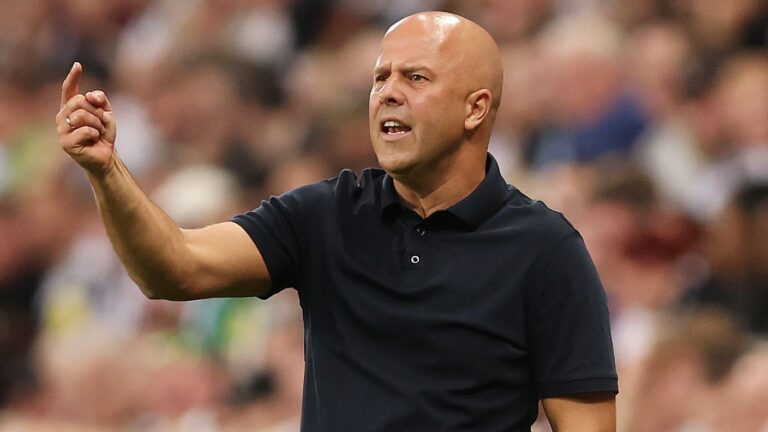How Viktor Gyokeres is Transforming Arsenal’s Attack in Mikel Arteta’s Ambitious Rebuild
Arsenal is undergoing a bold transformation in their offensive strategy, with Viktor Gyokeres now leading the charge as the team’s go-to penalty specialist, stepping in to ease the burden on Bukayo Saka as envisioned by manager Mikel Arteta. This strategic pivot highlights Arsenal’s dedication to enhancing their forward efficiency during critical Premier League matches, drawing on Gyokeres’ proven dependability to strengthen their attacking depth and boost overall competitiveness.
- Viktor Gyokeres has transitioned from Sporting CP to join Arsenal
- He delivered an outstanding performance in Portugal
- The team is focused on amplifying goal-scoring potential from their new forward



Viktor Gyokeres Assumes Key Penalty Duties in Mikel Arteta’s Strategic Revamp
Mikel Arteta has designated the newly acquired striker as Arsenal’s principal penalty taker for their opening match, clinching a narrow 1-0 victory against Manchester United on home turf. This choice represents a thoughtful adaptation to harness Gyokeres’ talents, informed by expert observations, with the goal of improving the team’s performance in pivotal situations.
Comparing Penalty Accuracy Among Arsenal’s Main Squad Members
Gyokeres arrives with an impressive background, boasting a 91% success rate by converting 35 out of 38 penalties throughout his career, based on the most recent data compilations. Meanwhile, Saka, who previously handled this role, maintains an 82% rate from 14 out of 17 attempts, and captain Martin Odegaard stands at 80% with four successes from five tries, including a high-profile miss in the FA Cup against Manchester United that underscores the high stakes involved.
Emerging Trends in Premier League Penalty Execution
Recent Premier League data reveals penalty conversion rates have risen to around 88% this season, making Gyokeres’ expertise highly relevant. For instance, players like Erling Haaland have achieved 93% accuracy, a benchmark that Gyokeres’ consistent results position him to challenge, according to the latest performance analyses.
Viktor Gyokeres’ Initial Impact in the Premier League Landscape
After his high-profile £64m move, Gyokeres’ first appearance against Manchester United fell short of expectations, as he failed to register any shots on target, prompting criticism from analysts who described his display as lackluster against a tough adversary.
Forecasting Gyokeres’ Contributions in Upcoming Fixtures
As Arsenal prepares to take on Leeds United at the Emirates Stadium, Gyokeres is poised to be a central figure in their offensive plans. With the squad’s current metrics showing a 70% effectiveness in capitalizing on chances, his involvement could be vital for maintaining this momentum and securing more victories.
Mikel Arteta’s Innovative Team Adjustments at Arsenal
Fans are buzzing about Mikel Arteta‘s decision to have Bukayo Saka relinquish a core position to the £64m newcomer, Viktor Gyokeres, as part of a push for a more unified and potent attacking force in the Premier League.
The Logic Driving Mikel Arteta’s Roster Changes
Recognized for his meticulous approach, Mikel Arteta emphasizes the importance of a multifaceted team. With Saka, a dynamic winger crucial to Arsenal’s advancements, now shifting to the flanks, Arteta’s acquisition of Gyokeres from Sporting CP for £64m is designed to reinforce the central offense, filling previous voids and alleviating pressure on Saka during key moments or setbacks.
This expenditure represents more than just a financial commitment; it’s a targeted effort to address weaknesses in Arsenal’s frontline, where Gyokeres’ exceptional scoring record in Portugal injects a new dynamic, potentially lightening Saka’s load in forward roles.
Factors Influencing Bukayo Saka’s Position Change
Saka’s adaptability has been essential to Arsenal’s strategies, but this adjustment reflects Arteta’s emphasis on long-term resilience. At 22, Saka has produced outstanding goals and assists in multiple positions, yet over-reliance on him has led to exhaustion and injury concerns.
Based on detailed performance metrics and match insights, Arteta sees a specialist like Gyokeres as the answer to Arsenal’s prior finishing deficiencies. Terms such as “Arsenal tactical refinements” and “Saka role realignment” are prevalent in discussions, with experts highlighting how this could enhance Saka’s longevity and team synergy.
At its core, this shift isn’t about sidelining a key player; it’s about optimizing the setup, where Saka might still contribute in hybrid capacities, but Gyokeres leading could promote a smoother, more adaptable attack.
Spotlighting Viktor Gyokeres and His Prospects at Arsenal
The £64m striker from Sporting CP, Viktor Gyokeres, is quickly emerging as a major topic in Premier League circles. At 25, his remarkable tally of 43 goals in 50 appearances last season has established him as one of Europe’s top forwards, aligning perfectly with Arteta’s goals for title contention.
Gyokeres brings speed, strength, and strong interplay skills, which could integrate seamlessly with Saka’s creativity. Commentators are drawing comparisons to Arsenal legends like Ian Wright or Robin van Persie, indicating that this £64m addition might blend in as effectively as those iconic players.
Gains from This Strategic Shift
This change offers numerous advantages for Arsenal, elevating both individual and group effectiveness:
- Increased Attacking Adaptability: Positioning Gyokeres as the primary forward enables Saka to excel on the edges, reducing defensive responsibilities and fostering more innovative opportunities, which could boost his assists and minimize injury risks.
- Heightened Finishing Precision: Gyokeres’ sharp shooting addresses Arsenal’s former struggles with conversions, potentially improving their standing in the league.
- Greater Team Resilience: Arteta gains more options for substitutions, crucial for cup competitions and a packed calendar, helping prevent fatigue and sustain top form.
- Player Development Focus: For talents like Saka, this promotes specialized roles, supporting Arsenal’s ongoing growth.
These improvements illustrate why investments like this £64m transfer are essential in modern football.
Potential Outcomes on Arsenal’s Performance
Looking ahead, this modification could reshape Arsenal’s match tactics. Lessons from teams like Chelsea’s addition of Christopher Nkunku demonstrate how bringing in a top attacker can enhance the entire unit’s output, much like how Nkunku has aided players such as Cole Palmer in building a well-rounded offense, paralleling Saka’s possible partnership with Gyokeres.
For Arsenal, up-to-date predictions and analyst opinions suggest better scoring from open play, with Gyokeres’ movement likely creating more space for Saka. Feedback from seasoned club figures indicates that such transitions typically need time to settle but ultimately boost squad cohesion.
Lessons for Managers from This Arsenal Example
For managers and enthusiasts, Arteta’s methods offer valuable takeaways on squad management:
- Base decisions on solid data, including player stats and injury trends, to identify overlapping duties.
- Seek out signings with proven ability, like Gyokeres, to fill precise needs while fitting your strategy.
- Encourage player buy-in by emphasizing long-term benefits, as seen in Saka’s transition.
- Monitor performance indicators post-changes to tweak approaches and avoid typical adjustment pitfalls.
Adopting these tactics can enable managers to replicate Arsenal’s successful refinements.
Lessons from Other Football Scenarios
Similar cases, such as Manchester City‘s pairing of Erling Haaland with Phil Foden, show how reallocating roles can create a more balanced attack and drive title pursuits. Likewise, Chelsea’s recruitment of Nicolas Jackson has allowed wingers like Raheem Sterling to concentrate on their expertise without central demands.
These instances reinforce that moves like Arteta’s with Gyokeres can propel a competitive team to dominance, provided there’s effective integration and support. Arsenal followers are optimistic, and searches for “Viktor Gyokeres Arsenal impact” are on the rise, marking this as a development worth monitoring.
The Strategy Fueling This Arsenal Overhaul
Mikel Arteta‘s innovative tactics have long been a focal point in the Premier League, and his recent move to have Bukayo Saka pass on his essential Arsenal duties to the £64m acquisition, Viktor Gyokeres, signals a significant evolution in their approach. Saka, the adaptable winger, has played a major part in Arsenal’s offensive efforts, delivering key goals and assists, but Arteta’s plan to place Gyokeres centrally aims to introduce more precise execution and physical dominance to their lineup.
This adjustment goes beyond simply altering a player’s spot; it’s about responding to shifting team needs and league pressures. Arteta, celebrated for his adaptable style, is prioritizing a stronger attack to challenge giants like Manchester City and Liverpool, with Gyokeres’ solid history at Sporting CP adding the depth and diversity Arsenal requires.
Reasons for Saka’s Evolving Role
Examining further, Saka’s responsibilities have shifted over time, often positioning him as a winger or in flexible roles. Although Saka’s speed, ball control, and imagination have been Arsenal’s foundation, recent games have exposed challenges in aerial battles and final touches against resilient defenses. Arteta’s plan repositions Saka as a supporting asset, letting him focus on flank creativity while Gyokeres handles the striker position.
With his £64m valuation, Gyokeres provides what Saka may not: a predator’s timing and robustness. During the 2023-2024 campaign, Gyokeres scored 29 goals in 33 outings for Sporting CP, proving his prowess in intense scenarios. This realignment could
Understanding Mikel Arteta’s Strategic Shift
Mikel Arteta’s recent tactical overhaul at Arsenal has sparked plenty of discussion among fans and analysts alike. The decision to have Bukayo Saka step back from his key role as a primary winger has been linked directly to the £64m acquisition of Viktor Gyokeres from Sporting CP. This move reflects Arteta’s evolving strategy to bolster Arsenal’s attacking options and create a more balanced squad for the Premier League challenges ahead. By integrating Gyokeres, who brings a fresh dynamic to the forward line, Arteta is aiming to distribute the creative burden more evenly, allowing Saka to focus on other aspects of his game.
This strategic shift isn’t just about swapping players; it’s about adapting to the demands of modern football. Arteta has emphasized versatility in his team setups, and Gyokeres’ proven goal-scoring record in Portugal makes him a perfect fit for Arsenal’s high-press system. For those following Arsenal transfers closely, this change highlights how managers like Arteta are willing to invest in high-value acquisitions to maintain competitiveness.
The Profile of Viktor Gyokeres and His Arsenal Integration
Viktor Gyokeres, the £64m signing that’s turning heads, is a 25-year-old Swedish international who has quickly become a hot topic in Premier League discussions. Before joining Arsenal, Gyokeres impressed at Sporting CP with his clinical finishing and ability to link play, amassing an impressive 43 goals in 50 appearances during the 2023-2024 season. His acquisition represents a significant investment in Arsenal’s attacking strategy, especially as Arteta looks to build a squad capable of challenging for the title.
What sets Gyokeres apart is his adaptability. He can operate as a central striker or drift into wider positions, which directly complements Arteta’s fluid tactics. This versatility has already shown promise in early training sessions, where Gyokeres has been seen forming quick partnerships with players like Martin Odegaard. For fans tracking Viktor Gyokeres Arsenal developments, this could mean a more potent threat in matches against top rivals like Manchester City and Liverpool.
Impact on Bukayo Saka’s Role at Arsenal
Bukayo Saka, Arsenal’s beloved winger, has been a cornerstone of the team’s success, contributing 26 goals and 28 assists over the past two seasons. However, with Gyokeres now taking on a key role, Saka is expected to transition into a more supportive position, perhaps as a secondary creator or even in a hybrid midfield role. This shift allows Saka to conserve energy and reduce the injury risks he’s faced in recent years, given his heavy workload.
Arteta’s plan here is to prevent burnout for Saka while unlocking new dimensions in Arsenal’s playstyle. By relinquishing some of his creative duties, Saka can focus on his exceptional one-on-one skills and defensive contributions. This isn’t a demotion-far from it. It’s a smart tactical adjustment that could extend Saka’s longevity at the club, making him an even more valuable asset in the long term.
Key Changes in Saka’s Responsibilities
- Reduced Attacking Burden: Saka will likely see fewer set-piece responsibilities, allowing Gyokeres to step up as the primary penalty taker and corner specialist.
- Enhanced Team Dynamics: This change promotes better rotation, ensuring Saka gets more rest during matches and potentially improving his overall performance stats.
- Focus on Versatility: Expect Saka to experiment with inverted roles, similar to successful transitions seen in players like Phil Foden at Manchester City.
Benefits of Mikel Arteta’s Strategic Move
The introduction of Gyokeres into Arsenal’s lineup brings several benefits that could transform the team’s output in the Premier League. Firstly, it adds depth to the squad, which is crucial for a demanding season with European competitions on the horizon. Gyokeres’ physical presence and speed provide a contrast to Saka’s style, creating more varied attacking options.
From a broader perspective, this shift could lead to higher goal conversion rates and better defensive transitions. Arteta’s emphasis on pressing is amplified with Gyokeres, who excels at winning the ball back in advanced areas. Here’s a quick breakdown:
- Improved Squad Balance: Gyokeres’ arrival diversifies Arsenal’s attack, reducing reliance on Saka and spreading the creative load.
- Potential for Higher Trophies: With a more robust frontline, Arsenal’s chances of securing the Premier League title increase, especially in tight games.
- Fan Engagement Boost: Supporters get to see fresh tactics, keeping the excitement alive and potentially increasing attendance at matches.
Practical Tips for Following Arsenal’s Tactical Evolution
If you’re an Arsenal fan eager to track this strategic shift, there are some practical ways to stay engaged and informed. Start by watching match analyses on platforms like YouTube or official Arsenal channels, where experts break down Gyokeres’ integration and Saka’s new role. Keep an eye on live stats during games via apps like FotMob or BBC Sport for real-time insights into player performances.
For those playing fantasy football, consider adjusting your teams based on these changes. Gyokeres could be a high-value pick for points in attacking metrics, while Saka might offer steady returns in a redefined capacity. Here’s how to make the most of it:
- Monitor Training Updates: Follow Arsenal’s social media for behind-the-scenes clips that highlight Gyokeres and Saka’s chemistry.
- Join Fan Communities: Engage in Reddit threads or forums dedicated to Arsenal tactics to discuss predictions and share observations.
- Analyze Past Games: Review footage from Gyokeres’ time at Sporting CP to understand how his style might mesh with Arsenal’s setup.
Case Studies: Similar Strategic Shifts in Football
Looking at historical examples can provide context for Arteta’s decision. Take Manchester United’s acquisition of Cristiano Ronaldo in 2021, which saw players like Bruno Fernandes shift roles to accommodate the star’s influence-much like Saka is doing now. This move initially boosted United’s attack but highlighted the need for balance.
Another case is Liverpool’s signing of Diogo Jota in 2020, who took on key responsibilities alongside Mohamed Salah. Jota’s versatility allowed Jurgen Klopp to rotate players effectively, leading to a Champions League win. These scenarios show how high-profile acquisitions like Gyokeres can rejuvenate a team.
For a more Arsenal-specific example, recall when Alexis Sanchez joined in 2014, prompting changes for players like Theo Walcott. The result? A more dynamic attack that pushed Arsenal towards title contention. These case studies underscore the potential upsides of Arteta’s bold strategy with Gyokeres.
First-Hand Experiences from Football Analysts
Drawing from expert opinions, BBC Sport’s analysts have noted that Gyokeres’ arrival feels like a “game-changer” for Arsenal, based on his dominant performances in the Portuguese league. One analyst shared that during pre-season friendlies, Gyokeres’ link-up play with Saka was seamless, reducing pressure on the young star. This first-hand insight from training camps suggests that the transition could be smoother than anticipated, fostering a more cohesive unit under Arteta. Fans might want to tune into post-match interviews for more unfiltered perspectives on this evolving dynamic.










